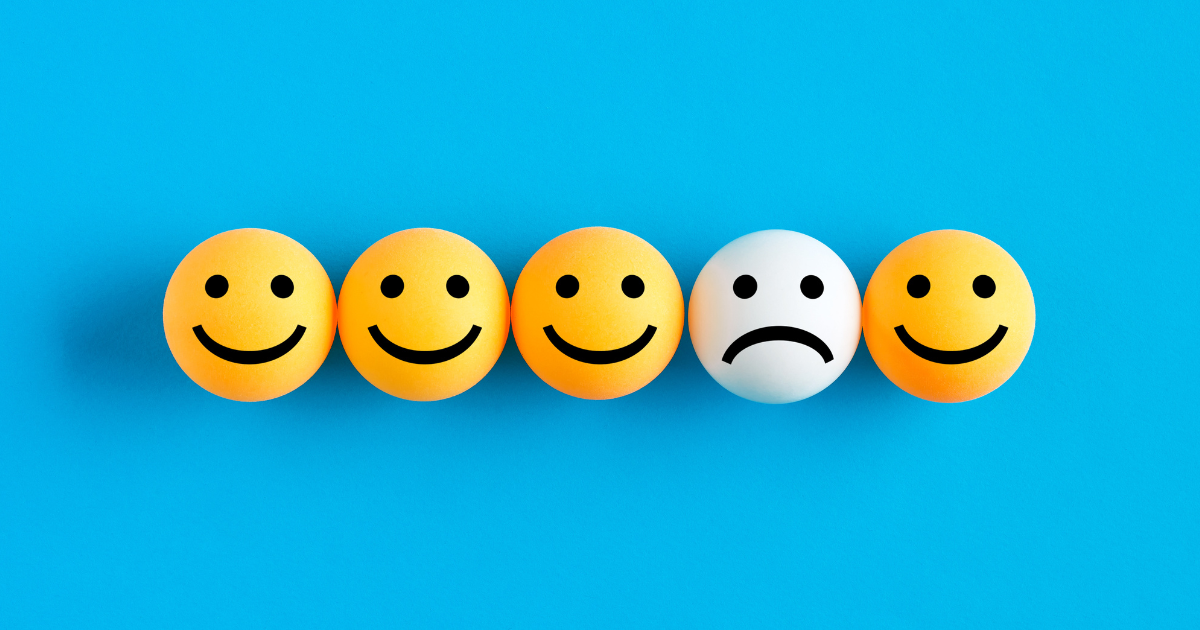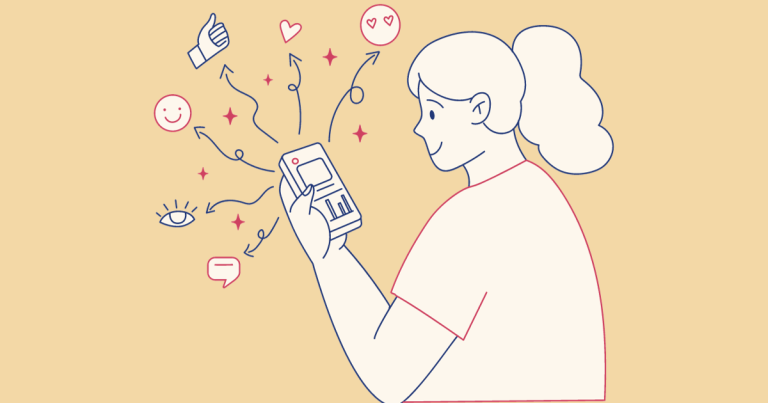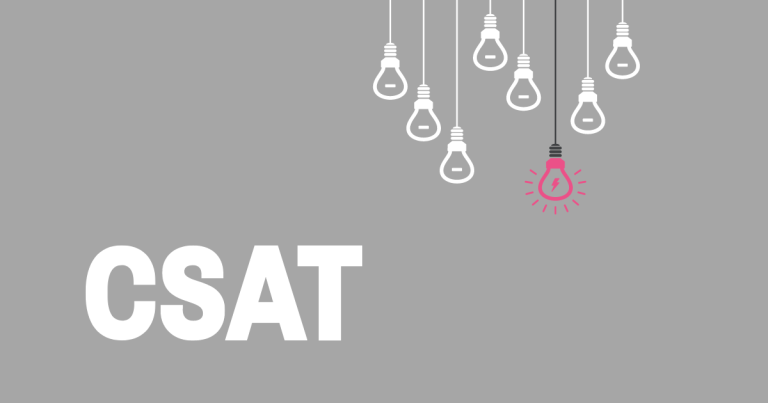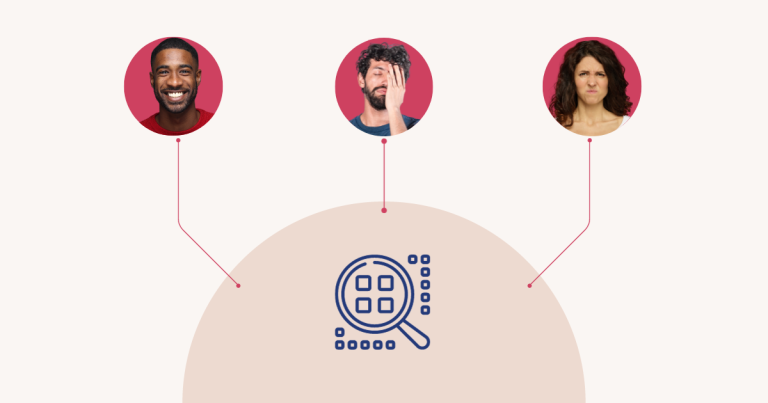In business settings, customer retention is one of those terms that never goes out of style. Research shows that a 5% increase in customer retention can increase profits by up to 95%. According to other studies, the cost of retaining an old customer is five times lower than that of acquiring a new one. The key takeaway here is that there is value in holding on to your existing customers.
Poor customer retention is like filling a bucket with holes in the bottom; while you could keep adding to make up for it, it would be far better to identify the source of the holes and figure out how to fix them.
What is Customer Retention?
Customer loyalty, or an organization’s capacity to retain customers over time, is measured by customer retention. In addition to counting the number of devoted customers, consumer retention can represent or forecast customer satisfaction, repurchase behavior, customer involvement, and emotional links to a brand.
Customer retention numbers are tied to the first transaction made by a customer and include all future contacts, whereas customer relationships often start with an initial engagement. Organizations can use this feedback after assessing customer retention to analyze aspects of customer success and customer experience. As an illustration, if a decline in client retention is noted, a company can use this information to determine the fundamental cause and modify its product offers.
Because it costs significantly more to acquire new clients than it does to keep existing ones, customer retention is crucial.
Additionally, returning consumers are more likely to participate in word-of-mouth advertising or serve as brand ambassadors.
Why is Customer Retention So Important?
Understanding client retention is important because it gives insight into how satisfied and devoted your customers are, how effective your customer service is, and whether any warning signs can deter future customers. In the long run, focusing on customer retention pays off:
Retaining Customers is Cost Effective
Retaining current clients is frequently more affordable than finding new ones. Sales, marketing, and customer acquisition costs typically outweigh those associated with ongoing customer pleasure and customer service.
Loyal Customers Buy More
Businesses may up sell or cross-sell to their customers more successfully since they already have a relationship based on trust and product satisfaction.
Happy Customers Bring in New Business
The best thing about loyal consumers is that they frequently speak well of your brand and become brand ambassadors, which is invaluable. Yotpo reports that 60% of customers share their brand loyalty with friends and family. Retention is crucial for your company since word-of-mouth spreads tremendously.
How to Measure Customer Retention?
Returning clients greatly impact revenues more than new ones. Therefore, it makes more sense to keep them than to look for new customers continually. This is because, per one study, the expenditures associated with acquiring a new client are 5 to 25 times more than those involved in retaining an existing customer. On the other side, if retention rates increase by 5%, profitability will increase by 25 to as high as 95%.
Continuous practices are needed to ensure long-term customer retention improvements and low churn rates.
Additionally, increased customer retention inevitably results in higher revenues. This measurement is the basis for essential internal adjustments, enabling the achievement of growth goals and minimizing client loss. Therefore, a key component of the sales forecast is client retention measurement.
Customer Retention Rate
The retention rate alone is the most obvious formula for customer retention. To determine whether your current strategy is successfully luring new customers at a good rate, you must analyze how much your customer base is developing loyalty each time.
To calculate your Customer Retention Rate (CRR) over a given time period use the following formula:

Customer Lifetime Value
The average customer’s revenue contribution to your business throughout their engagement with your brand is measured by their customer lifetime value. Customer lifetime value is crucial because it provides the clearest picture of how much should be allocated for acquisition expenditures, allowing you to manage your marketing budget effectively.
Customer Lifetime Value = Average Total Order Amount * Purchase Frequency Rate * Retention Rate.

Customer Churn Rate
Your revenue churn rate is the proportion of sales you lost to repeat clients during a specific time frame. For instance, a plan downgrade, the termination of a commercial partnership, or order cancellation can all lead to revenue churn. The revenue churn rate is crucial to client satisfaction, especially for SaaS (Software as a Service) businesses.
Although the aggregate revenue churn rate offers a comprehensive picture of customer health, it must be monitored on a per-person basis. The main goal of your customer success team is to proactively ensure consumers aren’t experiencing issues while using your product or service, much less getting close to the point where they downgrade their membership.
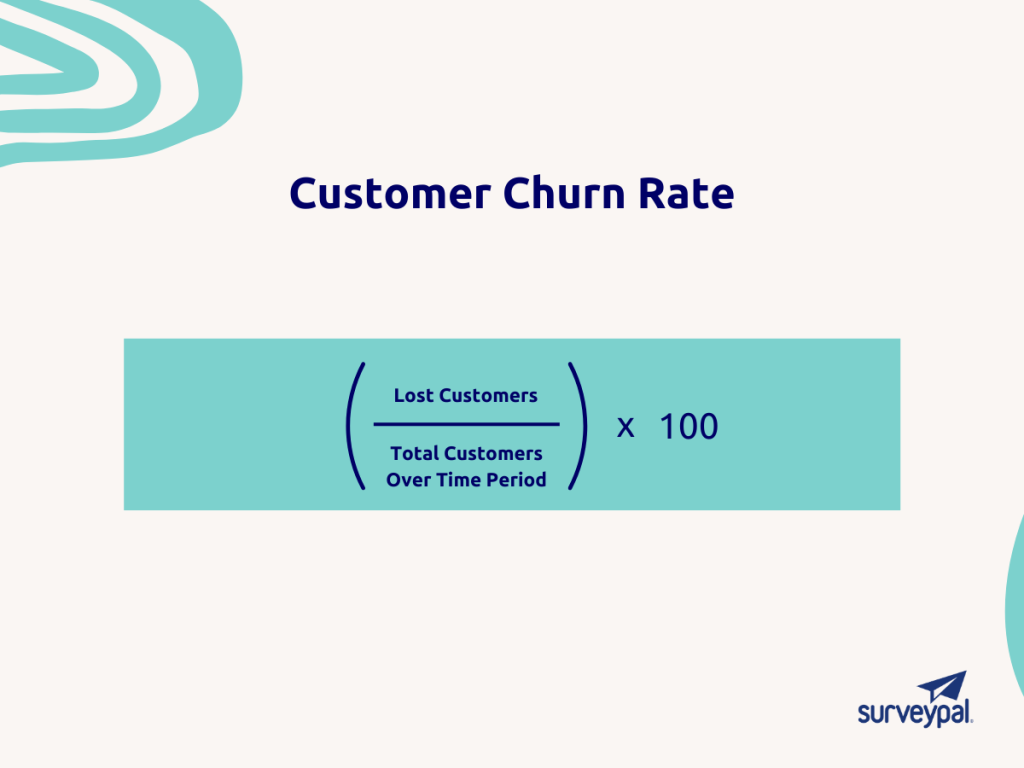
Strategies to Improve Customer Retention
When customers are retained, less money is spent on customer acquisition, and more is made for your business. Consider utilizing one of these 15 customer retention strategies to increase your revenue by keeping the clients you already have before you fully commit to tactics meant to fill your sales pipeline with new prospects. These 15 strategies are tested and tried; you can use them to improve customer retention for your business:
Create a Smooth Customer Onboarding Plan
Your company has the chance to establish a lasting first impression when a consumer makes their first purchase, so make sure your onboarding procedure runs like a well-oiled machine.
Customers will certainly remember any problems with customer service during their initial onboarding, such as information being handled incorrectly or not having a defined point of contact to guide them through the process. Even though your company can rapidly resolve those points of contention, it could still leave the customer with a negative impression.
Beyond providing excellent customer service, a strong onboarding process should also consider how well the onboarding program works. If you want to enthral and impress potential customers, workflows with timely email triggers, self-service knowledge base access, follow-up messaging, and celebratory messaging are necessary for your company.
Increase the Speed of Your Customer Service
Fast customer service frequently means keeping repeat consumers and not losing them to rival brands. Businesses are more likely to exceed customer expectations and foster enduring connections if they prioritize promptly answering customer concerns and complaints.
Consumer expectations for service are also rising, with 66% of customers saying they want a response from a company immediately. However, there is room for improvement as only 26% of retail companies believe their overall customer service quality is strong.
Building trusting relationships with consumers is the key to providing top-notch customer service. This awareness of consumer demands is the foundation of these connections.
Brands must be ready to put customers first, empathize with them, and meet them where they are. At the end of the day, you need to offer assistance that suits the needs of your clients.
Improve your First Contact Resolution (FCR) Rates
A crucial call centre performance statistic and a component of customer relationship management (CRM) is First Contact Resolution (FCR). The definition of the phrase is self-explanatory: the capacity of a contact centre to address the issues, concerns, or demands of customers on the first call, without further assistance.
FCR monitors agent efficiency and, in the end, plays a crucial role in contact centre profitability. It not only helps gauge customer satisfaction—the better your first-call resolution rate, the more delighted your customers tend to be—and, as a result, drives client loyalty. The following is the standard FCR calculating formula:
First Contact Resolution (FCR) = (Resolved issues on first contact / Total issues) x 100
Although FCR is a well-known contact centre KPI, it should be monitored along with other customer service indicators like Customer Satisfaction, Average Handle Time (AHT), Net Promoter® Score, etc. By doing this, you can be confident that you’ll better grasp how your support operations stack up against your strategic objectives.
Since we’ve demonstrated the significance of FCR for your company’s performance, it only makes sense to look into techniques to raise first contact resolution rates. Here are some of the best techniques to aid in your ongoing improvement:
- Adjust your Average Handle Time to reflect team goals
- Deliver omnichannel support
- Invest in Artificial Intelligence & Automation
- Train and coach your agents
- Provide specific and relevant answers
Provide Proactive Support
Proactive support aims to assist customers before they need to get in touch with a support team and, in some cases, even become aware that they have a problem.
Proactive support is an integrated strategy that encompasses your support strategy, mentality, and technology to anticipate client demands and provide the appropriate help at the appropriate time through the appropriate channel.
You may alter the story with proactive support and avoid a disappointing conclusion. You can give individuals the quick, effective, and personalized customer experience they want by anticipating and answering their requirements.
The social media behemoth’s website offers information that addresses frequently asked concerns and guides users through some of the system’s functions. Its interactive help section offers new users site overviews and material on various subjects.
Additionally, AT&T assists its customers in avoiding the “bill shock” phenomenon. This happens when clients receive their first bill and are confused by it, and inbound calls to customer service are frequently confused due to this.
Deliver Personalized Communication
Generalized communication methods, including bulk emails, billboards, and TV ads, have long been used in large-scale communication efforts in public relations, business, and politics. All recipients of these impersonal communications receive the same message.
Companies can use demographic-based placement, email lists, and other methods to target such communication initiatives. Still, generalist messaging falls short in terms of personalizing information to people’s interests, values, needs, and purchasing behaviors.
Technology advancements have greatly facilitated firms’ ability to collect and analyze data on specific clients and prospects. The ability to adapt interactions to customers has become more effective and affordable thanks to advancements in data analytics capabilities.
Since consumers frequently require a reason to pay attention to a brand or product, they have evolved to anticipate individualized communication in all interactions. Customer engagement, retention, brand loyalty, and word-of-mouth advertising depend on personalized communication. In fact, “personalizing the client experience” was listed as the top priority by 70% of respondents in an Ascend2 survey of businesses.
Clients, staff members and business associates demand a more personalized experience. Personalizing all communications, both internal and external, can thereby enhance employee satisfaction (and retention), profitable alliances, goodwill with clients, and sales.
Offer Omnichannel Customer Service
One of the best methods to guarantee customer retention and satisfaction is to offer omnichannel customer assistance. In fact, according to research by the Aberdeen Group, businesses that offer a consistent level of customer service across numerous channels can keep 89% of their clients, as opposed to those that are only able to keep 33%. There are numerous other justifications for adopting an omnichannel strategy that will benefit you and your customers. You should learn how to deliver it and boost customer retention.
Not every client will regularly reach out to your company via email or other means. For instance, 63% of millennial choose live chat widgets over traditional channels to receive basic customer service responses. In comparison, 28% of Gen Z users started using in-app messaging more frequently than 12% of people in the 55+ age group.
No matter how you divide up your customer persona, you’ll see that each group has a different preferred method of getting in touch with customer service.
For everyone to receive the assistance they require quickly and conveniently, you must offer support through various channels. This leads us to the following section, but everything must be seamless.
Invest in Customer Self-Service
Self-service refers to a situation where customers can deal directly with a business, resulting in quicker service and greater autonomy. Organizations must fully grasp the concept and develop customized solutions for a business to survive in Industry 4.0.
Because of shifting consumer preferences and the demand for more experiences with value-added, brands must be better prepared to offer prompt and effective service. Businesses that still believe that self-service platforms are only available through ATMs or applications may suffer as a result. Not investing in self-service is not a disservice to your clients if you excuse the pun, and it’s a disadvantage in the marketplace. You should learn how to harness the power of customer self-service to boost retention.
Giving your leaner, meaner rivals a shotgun so they could accomplish that for you is one step above rather than shooting yourself in the foot. (See, it’s obvious that self-service is preferable even when it comes to foot-shooting.)
Offering self-service doesn’t necessarily mean that you stop providing service. You are improving the overall experience and letting your clients know that you believe in them enough to let them handle things on their own.
Build an Online Community
A branded online community is a business network that unites people with a common interest in or experiences with an organization to foster extensive online collaboration and growth.
The kind of community we’re referring to here is the kind your company would create online to connect members, clients, staff, partners, or any other potential community members.
Online groups are sometimes populated by people who are ready to assist others. When customers ask questions about goods or services, there is a good probability that a community member will respond. That response will be available to anybody else who has the same question. This does not imply that customers should only manage a community for customer service.
Initiate a Customer Education Program
A customer education program helps you stay committed to your customer base in the long run. This program develops several resources, as well as a knowledge base and discussion forum. Customers can avail these resources before getting in touch with support when they need answers to service-based queries. This initiative may go beyond just your goods and services.
There are numerous methods for instructing new consumers on how to utilize your product, including:
- Provide in-product onboarding with instructions and guides to assist brand-new users
- Send a series of emails throughout the lifecycle to new clients to help them learn how to utilize your product
- Offer private training sessions with a salesperson, customer service representative, or onboarding expert
- Establish a self-service training academy online for new clients who choose it
- Create a community of product specialists that both new and seasoned customers may consult for assistance
Invest in Your People
Customer satisfaction is influenced by contented staff, and employees happy with their jobs are more inclined to help customers and provide better customer service. This improves consumer satisfaction, fosters customer loyalty, and ultimately spurs greater profitability. On the other hand, low employee satisfaction and generally low employee morale can significantly negatively impact business operations, leading to unhappy consumers and hurting profits.
When you give staff the resources and training they require, employee satisfaction increases and so does the capacity of your team to provide superior customer service. Increased productivity translates into better service and value for your consumers, increasing employee satisfaction. Increased client happiness and loyalty due to this value encourage profitability and ongoing success.
Follow Up with Customers
Excellent customer service goes beyond simply resolving an issue; it includes everything that gives customers value and the transaction itself. And for this reason, follow-up in customer service is crucial because it focuses on forging a lasting relationship and turning prospects into devoted clients.
Customers frequently have faith in a company that attempts to get to know them. Investing in long-term relationships is crucial to truly understanding your clients.
Additionally, you won’t be able to provide a tailored experience at different client touch points and throughout their journey if you don’t know and understand your customers properly.
Multiple follow-up attempts are necessary to persuade clients and convert leads. Despite this, most customer support representatives give up after one follow-up, frequently resulting in numerous missed chances for the company.
There are many different techniques to interact with customers. You may choose the best channel, connect with your audience, and solve their problems quickly based on the sector, nature of your business, and preferences of your customers. And you move in the right direction toward earning their trust when you recognize the value of follow-up in customer service. There are many solutions available for customer service follow-up, including:
- Proactive Automation
- Business Messenger
- Knowledge Base
- Support via Updates
- Thank You Message
Develop Product Features and Services Unique to Your Customers’ Needs
A product or service might stand out from the competition if it is distinctive. A product’s or service’s capabilities can be expressed through features. However, features are only valuable if users value them specifically. You want your goods or services to have qualities that clients value as advantages. Your sales and earnings will rise if you emphasize benefits in your marketing and sales activities.
It’s crucial to remember that customers purchase goods and services to satisfy needs or solve problems. What’s in it for me? This is a question that your customers will inevitably ask, whether consciously or unintentionally. If you don’t provide solutions and meet needs, your product and service offerings won’t be successful.
Consider how automakers promote their products. When selling minivans, they don’t highlight the interior design or the vehicle’s carrying capacity. They display pictures of contented parents putting their children, toys, and sporting goods in the car. Beyond the characteristics, they place more emphasis on the advantages.
Perform Sentiment Analysis on Customer Feedback
Smart language algorithms enable sentiment analysis. In a nutshell, it functions by locating and quantifying the favorable and unfavorable emotions in our words.
A crowded live chat service’s flow can frequently obscure this kind of subtle wordplay. While agents make every effort to answer promptly and accurately, further investigation is challenging.
Customer satisfaction is clearly outlined through sentiment analysis, agent by agent. This enables you to monitor each team member’s level of customer service and their more subtle capacity to delight clients.
Emotional triggers drive our decisions. Using sentiment analysis, you can determine which remarks and discussions are emotive triggers that alter the client’s mood.
You may provide better customer service and produce marketing materials that are more effective. if you are aware of the messages that make your target audience feel particular emotions. Start by choosing the right channels to promote customer service.
Design Retention and Loyalty Programs
In addition to providing clients with rewards and perks, loyalty programs foster an emotional bond between customers and businesses. Customers return time and time because of this bond. A loyalty program increases a customer’s likelihood of purchasing from a brand by 78%.
An attractive rewards program can be the differentiating feature that attracts loyal customers to a business to spend their hard-earned money in a world where there are several ways to shop, whether in-store, online or through a gaming app.
Having devoted clients becomes more crucial and challenging in such a setting. It’s so unusual that Bain & Company’s Frederick Reichheld continued by saying, “Client loyalty is a rare commodity.”
However, weighing the advantages and disadvantages of loyalty platforms in your industry is crucial to make the best decision for your business and target market.
Every loyalty scheme functions slightly differently. Most businesses reward their customers on their spending, while others have a point-based system. Special discounts and member-only promotions are some additional rewards offered by loyalty programs. Companies frequently use mailing lists to notify their devoted customers of special offers, luring them to continue spending.
Capitalize on Your Customer Data
Customer data is the information you gather from clients as they engage with your business through multiple channels. Customer data comprises personal, demographic, and behavioral information that may be used to understand your audience better and enhance your interactions with current and potential clients.
Online firms automatically collect a tone of client information, but not all of them take advantage of interaction data’s potential huge foster long-term expansion. Data management can be difficult without the proper procedures and a customer data platform that provides a single view of the client profile.
Customer data’s four most crucial categories are personal, behavioral, attitudinal, and engagement data.
Launching a brand-new good or service on the market or charging a fair price while being profitable is challenging. Customer data becomes crucial if you want to differentiate your business from the competition and give your customers exceptional experiences.
Customers have high expectations, and there are numerous alternatives to what you have to offer them. Utilizing the potential offered by customer data is the only way to succeed in this customer experience economy.
You can forecast future customer behaviors and make smarter decisions based on what you already know about your customers, which is one of the best things about gathering, evaluating, and utilizing customer data. Your customer data is the basis for developing more intelligent acquisition and retention strategies.
Wrapping Up
There is no better approach to guarantee the expansion and success of your company than to delight your current clientele. You should improve customer retention to cultivate their loyalty over time, and encourage them to recommend you to their friends.
This is the right time to reverse any customer retention initiatives prioritized over new customer acquisition. You can use the techniques mentioned in this post to build a better relationship with your customers and improve your retention rate. Utilize these fifteen techniques to keep your top customers happier for longer by starting to measure and track your CRR.
Did you like the post?
You might also like:

Surveypal
Everything you need to lead and improve your customer experience. Learn more at surveypal.com, or
